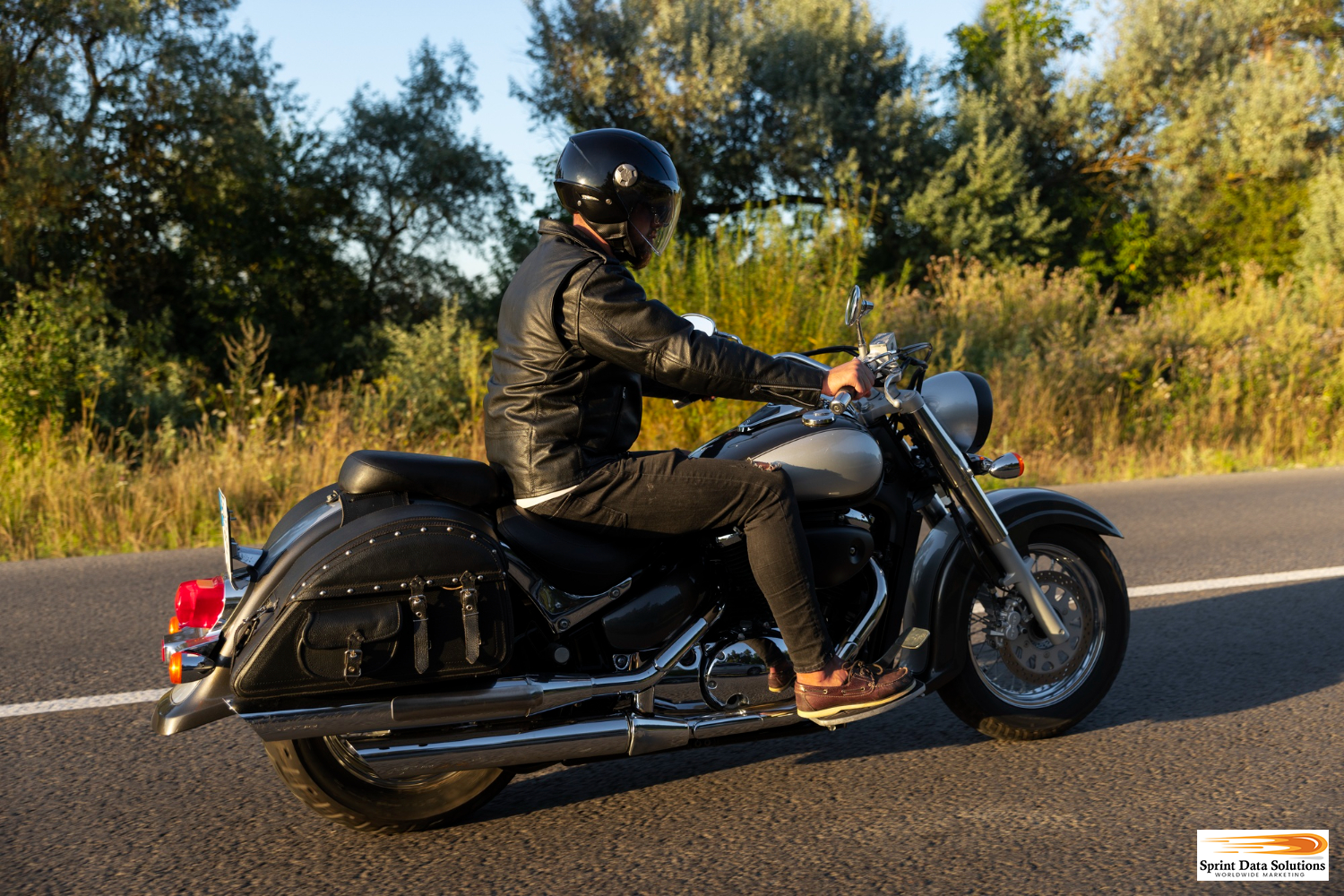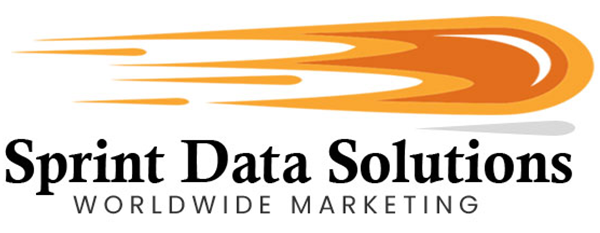Trike Owners Are A New & Growing Market
In the grand tapestry of global history, the United States stands as a relatively young nation. Yet it is precisely this youth that allowed America to grow in tandem with modern technological and infrastructural advancements. One of the most enduring symbols of this progress is the country’s vast and intricately designed network of streets, highways, and interstates. Spanning coast to coast, these roadways have not only fueled economic development and suburban expansion but have also cultivated a unique cultural identity rooted in personal mobility. From daily commutes to spontaneous cross-country adventures, the freedom of the open road has been a hallmark of the American experience.
Among the many vehicles that symbolize this national love affair with the road, few are as iconic as the motorcycle. Synonymous with independence, rebellion, and adventure, the motorcycle has captured the imagination of countless generations. However, in more recent years, a notable evolution in this space has emerged: the trike motorcycle. Offering the thrill of two-wheeled riding with the added stability and comfort of a third wheel, trikes are appealing to a broader demographic, including older riders, people with physical limitations, and those seeking a more secure riding experience. This shift is not merely a trend—it represents a growing segment of the powersports market.
For companies aiming to stay ahead of consumer demand and capture the attention of this expanding audience, the rise of trike motorcycles presents a lucrative opportunity. Businesses that adapt to these emerging preferences stand to benefit significantly. Sprint Data Solutions Worldwide Marketing is already ahead of the curve, offering comprehensive marketing services tailored to reach and engage this vibrant and evolving customer base. With precise targeting capabilities, extensive data resources, and a deep understanding of niche markets, Sprint Data Solutions empowers businesses to forge meaningful connections with trike motorcycle enthusiasts and convert interest into long-term brand loyalty.

What Is A Trike Motorcycle?
A trike motorcycle, as the name suggests, combines the fundamental characteristics of a traditional motorcycle with the stability of a three-wheel configuration. Unlike the classic two-wheeled motorcycle design, a trike incorporates an additional wheel, typically arranged in one of two common configurations: either two wheels at the rear and one at the front (the more traditional setup), or two wheels in the front and one at the rear, a layout that has gained traction in recent years for its enhanced stability and braking performance. The origins of the motorized tricycle can be traced back to the 19th century, an era of prolific automotive experimentation when manufacturers tested a wide variety of vehicle formats before the dominance of the four-wheeled car and two-wheeled motorcycle.
While the idea of a three-wheeled vehicle is not new, it experienced a renaissance in the early 21st century as motorcycle enthusiasts began transforming standard motorcycles into trikes through aftermarket customization. These conversions, often elaborate and tailored to rider preferences, became increasingly popular, appealing to older riders and those seeking enhanced road comfort and safety. This trend grew strong enough that in 2009, Harley-Davidson—an iconic name in motorcycle manufacturing—introduced its first factory-produced trike model, the Tri Glide Ultra Classic. This marked a turning point, signaling mainstream acceptance and encouraging other manufacturers to enter the market with their own three-wheeled designs.
Today, trike motorcycles represent a growing niche within the broader motorcycle industry. Their appeal lies in a blend of motorcycle freedom and enhanced road stability, especially beneficial for riders with mobility limitations or those embarking on long-distance journeys. Whether factory-built or custom-converted, trikes continue to attract both seasoned bikers and newcomers looking for a distinctive and accessible riding experience.
The Trike Difference
Trikes, or three-wheeled motorcycles, aren’t designed with a third wheel purely for cosmetic or stylistic flair; their core advantage lies in enhanced stability. The addition of a third wheel transforms the riding dynamics entirely, eliminating the need for the rider to manually balance the vehicle—an essential requirement for two-wheeled motorcycles. This configuration allows trikes to remain upright much like a car, even when stationary, making them inherently more accessible and easier to control.
Initially, trikes were predominantly custom-built by small-scale workshops catering to a niche but growing demographic—motorcycle enthusiasts whose changing physical needs required a different kind of ride. Many of these riders were aging veterans of the motorcycle scene or individuals recovering from accidents that limited their mobility. For them, the thrill of the open road didn’t disappear with physical limitations, and the trike offered an ideal compromise: a way to maintain the spirit of motorcycle riding without the physical exertion of balancing a traditional bike.
This accessibility wasn’t just appealing to older or disabled riders; it also opened the door for beginners or those less confident in their physical coordination. For newcomers, especially those hesitant about balancing on two wheels at higher speeds, trikes offered a safer, more stable entry point into the world of motorcycling. Over time, their broad appeal began to shift industry perspectives.
Recognizing this untapped potential, major motorcycle manufacturers such as Harley-Davidson began to invest in trike production. They understood that trikes weren’t just a temporary solution for aging riders—they were a gateway to new market segments. Riders who might never have considered motorcycles due to balance issues, fear, or physical limitations were now joining the ecosystem, expanding the community and increasing sales. This realization spurred innovation, leading to more sophisticated models with added features for comfort and safety.
Modern innovations like the Polaris Slingshot challenge traditional perceptions of motorcycles by merging automotive and motorcycling elements. Featuring car-like attributes such as side-by-side seating, seat belts, and a steering wheel, these three-wheeled vehicles straddle the line between motorcycle and sports car. Despite this, they are legally categorized as motorcycles in many jurisdictions due to factors like weight, number of wheels, and open cockpit design. This evolution reflects a broader trend in transportation—one that prioritizes accessibility, safety, and a more inclusive rider experience. What was once the domain of niche trikes and unconventional builds has expanded into a flourishing segment, attracting a wider demographic including older riders, individuals with physical limitations, and those seeking the thrill of motorcycling without compromising on stability or comfort. As the lines blur between vehicle classes, trikes and reverse trikes like the Slingshot represent not only engineering ingenuity but also a shift in cultural values around mobility and freedom on the road.
Who Is The Market?
The demographic of individuals who use trikes often includes many of the same people who ride motorcycles, as there is a significant overlap between the two groups. Enthusiasts of open-air, motorized transportation are naturally drawn to the comfort and stability that trikes offer, especially as an alternative to traditional two-wheeled bikes. However, the appeal of trikes is expanding beyond the conventional motorcycle crowd. Increasingly, trikes are attracting a broader range of users, including older riders seeking a safer, more comfortable ride, individuals with mobility limitations who may find balancing on two wheels challenging, and even newcomers to motorcycling who prefer the added confidence of three wheels. This growing diversity among trike users reflects the vehicle’s rising popularity across different segments of the population.
Elderly Riders
The trike market originally emerged to cater to motorcycle enthusiasts seeking greater stability, and it continues to thrive today. In the United States, motorcycles have long been embedded in the cultural fabric, with generations of riders forming lifelong bonds with the open road. As time progresses, many of these riders—now entering their senior years—still maintain a deep passion for riding but may find traditional two-wheeled motorcycles increasingly challenging due to age-related physical limitations such as reduced balance, strength, or reflexes. Trikes, with their three-wheel configuration, eliminate the need for constant balance and complex counter-steering, offering a more stable and manageable alternative while preserving the exhilarating, open-air freedom that motorcycles uniquely provide.
This shift has sparked the emergence of a growing demographic: senior riders who want to continue their journeys without compromising safety or comfort. As a result, there is a rapidly expanding market segment centered around older adults who are both nostalgic and adventurous. This creates a lucrative opportunity for manufacturers and service providers to design age-appropriate accessories, comfort-focused gear, enhanced safety features, and tailored riding experiences such as guided trike tours or maintenance programs specifically for seniors. The intersection of passion and practicality is giving rise to a robust and vibrant ecosystem that supports aging riders in staying connected to the lifestyle they love.

Disabled Riders
Motorcycles can pose significant physical challenges even for able-bodied riders, but for individuals with disabilities, traditional bikes may be outright inaccessible. While some disabilities, such as blindness, understandably preclude any form of driving, others—like lower-limb paralysis, single-limb amputation, or reliance on a wheelchair—still allow for the safe operation of specialized vehicles. In this regard, motor trikes have emerged as an empowering alternative to two-wheeled motorcycles. Unlike motorcycles that require core strength for balancing, quick reflexes for counter-steering, and precise foot coordination for gear changes and braking, trikes eliminate the need for manual balance entirely. With three wheels, they provide a stable platform that doesn’t topple over, especially during stops or low-speed maneuvering.
Beyond stability, trikes can be heavily customized to suit the rider’s physical needs. Innovations include relocating all essential controls—gear shifts, brakes, throttle, and clutch—onto the handlebars for hand operation, bypassing the need for foot control entirely. Many models also support automatic transmissions, further simplifying the ride. These adaptations mean that riders with paraplegia, prosthetics, or limited leg mobility can enjoy the open-road experience without compromise. For disabled individuals seeking both personal freedom and the thrill of motorcycling, trikes serve as more than just transportation—they represent a powerful symbol of inclusion, autonomy, and equal access to adventure.
People Who Don’t Like Motorcycles
The motor trike market is experiencing a remarkable evolution, marked by the emergence of a new type of rider—individuals who would never have considered operating a traditional two-wheeled motorcycle. Many of these newcomers cite concerns about the physical balance, coordination, and perceived danger associated with motorcycles. In contrast, the three-wheeled structure of motor trikes offers a more stable and secure riding experience. Some advanced models even feature steering wheels and side-by-side seating arrangements, resembling compact, open-air vehicles rather than conventional motorcycles. These designs are appealing to a broader range of consumers, including older adults, people with physical limitations, and those who simply want the freedom and enjoyment of a motorcycle-like experience without the challenges typically involved. Interestingly, many of these trikes still require a motorcycle license, despite their car-like features, further highlighting their hybrid nature.
This shift significantly expands the target demographic of the powersports market, moving beyond the stereotypical young, thrill-seeking male rider to encompass a wide variety of age groups, genders, and lifestyle preferences. The more inclusive the customer base becomes, the more marketing strategies must evolve to reach and resonate with these diverse audiences. This is where Sprint Data Solutions Worldwide Marketing offers a powerful advantage. With access to sophisticated consumer databases, targeted mailing lists, and comprehensive marketing solutions, Sprint can help businesses tap into this growing and varied segment of motor trike consumers. By identifying and engaging with new market segments through direct mail, email campaigns, or digital advertising, Sprint enables brands to effectively position themselves at the forefront of this exciting, expanding niche.
Who Is Sprint Data Solutions Worldwide Marketing?
Sprint Data Solutions Worldwide Marketing is a proudly American-owned and operated enterprise, founded on the vision of a disabled veteran. After completing military service and returning to civilian life, the founder sought to pivot from defending the nation to strengthening its economic foundation. This mission centered on empowering American businesses by helping them grow their most valuable assets—customers and clients.
The company took root in the entrepreneurial heart of Las Vegas, Nevada. It began by supporting local businesses with a dedication to integrity, personalized service, and outstanding results. This early focus on quality and client satisfaction laid the groundwork for sustained success, enabling Sprint Data Solutions to evolve from a local startup into a formidable presence in the marketing industry. Today, the firm proudly comprises a team with over 50 years of collective experience across diverse marketing disciplines.
Sprint Data Solutions entered the marketing space at a pivotal time, when traditional media—such as radio, print, and television—still reigned supreme. The company initially specialized in direct mail campaigns, which fostered deep expertise in data collection, database management, and predictive analytics. These foundational skills would prove instrumental when the digital marketing revolution emerged, rapidly shifting the industry’s landscape. By integrating digital strategies early, Sprint Data Solutions gained a first-mover advantage, helping clients capitalize on the new frontier with tailored, data-driven campaigns.
As the company’s reputation and capabilities expanded, so too did its geographic reach. From initially serving Nevada-based businesses, Sprint Data Solutions quickly scaled operations to cover all 50 U.S. states, including Alaska and Hawaii. This momentum carried the company into international markets, first entering Canada and Mexico, and later extending services across the Atlantic into the European Union. Clients now benefit from comprehensive access to key global regions, including prominent economic hubs like France.
Throughout its ongoing journey of evolution and progress, Sprint Data Solutions Worldwide Marketing has consistently upheld its core mission: empowering businesses to achieve sustainable growth through highly refined, data-driven marketing strategies. By leveraging cutting-edge technologies, industry-leading databases, and a deep understanding of consumer behavior, the company delivers precision-targeted campaigns that drive real, measurable outcomes. Guided by principles of trust, innovation, and accountability, Sprint Data Solutions not only adapts to the ever-changing marketing landscape but also leads the way—ensuring clients remain competitive, relevant, and results-focused in a digital-first world.

How We Can Help
Sprint Data Solutions Worldwide Marketing has dedicated years to meticulously building a robust and dynamic database of contact information, leveraging ethical and legally compliant practices. This includes partnerships with other high-integrity data providers across the United States, significantly expanding the scope and accuracy of the datasets. Every contact in the database is acquired through fully consensual channels—opt-in programs tied to subscriptions, service sign-ups, voluntary surveys, and even donated business cards submitted with the express understanding that the data may be utilized for marketing outreach. These entries are not static; they undergo frequent reevaluation and validation to ensure that each dataset reflects the most current and accurate contact information available. Life changes—such as relocations, career transitions, or mortality—can rapidly render data obsolete. For this reason, Sprint emphasizes ongoing updates to preserve the utility and precision of the information delivered to clients.
Possessing millions of names and associated contact details, while valuable, is only the foundation of what Sprint Data Solutions offers. The true competitive advantage lies in the company’s advanced AI-powered data analytics infrastructure. By integrating cutting-edge machine learning algorithms, Sprint transforms raw data into actionable intelligence. These systems are adept at filtering massive data volumes using client-defined metrics and search criteria. The result is not a generic list of leads, but a carefully refined subset of contacts aligned with a client’s specific marketing goals—whether defined by behavior, intent, geographic relevance, or other personalized parameters. Each dataset is therefore curated to enhance campaign effectiveness and return on investment.
Geographic segmentation plays a critical role in the utility of Sprint’s contact databases. Whether a campaign aims to achieve broad national coverage or a micro-targeted local presence, the data can be scaled appropriately. Clients can launch sweeping initiatives across the entire U.S. or narrow the scope to regional areas such as the Pacific Northwest. More granular targeting is also available—down to individual states like Oregon or even neighborhood-level campaigns, such as focusing exclusively on Pearl District residents in downtown Portland. This localization empowers marketers to reach audiences in areas with known high interest or strategic relevance.
Equally vital is the demographic flexibility offered by these datasets. Sprint’s contact records are more than geographic coordinates—they represent real individuals with unique traits and preferences. Demographic filtering enables clients to segment audiences based on ethnicity, religion, income levels, health conditions, age groups, and other sociocultural attributes. This allows brands to design campaigns that are not only targeted, but meaningfully personalized. For instance, a company promoting a dietary product can focus on individuals with specific health needs like asthma, while a community outreach initiative might be more effective if directed at particular religious groups or cultural communities. This high-resolution targeting ensures greater resonance, improved engagement, and ultimately, more responsive audiences.
Contact Formats & More
Sprint Data Solutions Worldwide Marketing provides access to highly targeted databases, tailored to deliver contact information in the precise format preferred by clients. Whether for general consumer outreach or B2B initiatives, the company offers comprehensive direct mail lists containing accurate physical addresses. These are ideal for postal marketing campaigns aimed at residential households or corporate offices. In parallel, email marketing needs are met with curated lists that include both individual and business email addresses, ensuring that outreach efforts connect with the intended audience. For strategies focused on personal interaction, clients can access telephone contact information. Residential landlines are included for broad consumer outreach, while B2B lists go a step further by including direct lines to decision-makers, avoiding the inefficiency of generic or receptionist numbers. Additionally, mobile phone numbers are available to support SMS or text-based promotional strategies, expanding the versatility of campaign approaches.
Beyond standard database services, Sprint Data Solutions also offers specialized support tailored to client needs. For businesses interested in executing a direct mail marketing campaign but lacking the expertise or infrastructure, the company provides a complete turnkey direct mail solution. This service offers end-to-end campaign management, covering every stage—from initial concept development and design to printing and final distribution. Clients benefit from a streamlined process under a single provider, avoiding the complexity and risk of coordinating multiple vendors. This holistic approach not only saves time and resources but also ensures a consistent, professional execution of marketing strategies, delivering better results with greater efficiency.
If you’re looking to market a product or service to trike owners, Sprint Data Solutions Worldwide Marketing offers the targeted leads you need to succeed. With access to comprehensive, verified contact lists and deep demographic insights, we help you connect with the right audience—people who are passionate about trikes and more likely to engage with your offering. Whether you’re launching a new product, expanding your reach, or increasing brand awareness, our precision marketing strategies ensure you reach the buyers who matter most. Get in touch today to discover how we can drive real results for your business.






